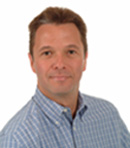Publications
- Date de publication : 2005-01-14
Référence
Martin LJ, Tremblay JJ. The human 3beta-hydroxysteroid dehydrogenase/Delta5-Delta4 isomerase type 2 promoter is a novel target for the immediate early orphan nuclear receptor Nur77 in steroidogenic cells. Endocrinology. 2005;146:861-9. doi: 10.1210/en.2004-0859. PubMed PMID: 15498889.
Information Complémentaire
Mot(s) Clé(s)
animals cells, cultured cyclic amp dna-binding proteins gene expression regulation, enzymologic humans leydig cells male mice multienzyme complexes nuclear receptor subfamily 4, group a, member 1 progesterone reductase promoter regions, genetic receptors, cytoplasmic and nuclear receptors, steroid response elements steroid isomerases steroidogenic factor 1 transcription factors
Résumé
The human (h) 3beta-hydroxysteroid dehydrogenase/Delta5-Delta4 isomerase type 2 (3beta-HSD2) enzyme, encoded by the hHSD3B2 gene, is mainly found in gonads and adrenals. This enzyme catalyzes an essential early step in the biosynthesis of all classes of steroid hormones. The critical nature of the enzyme is supported by the occurrence of human syndromes that are associated with insufficient 3beta-HSD2 expression and/or activity. Although the need for a functional 3beta-HSD2 enzyme is indisputable, the molecular mechanisms that regulate HSD3B2 expression (both basal and hormone-induced) in steroidogenic cells remain poorly understood. A role for the Nur77 family of immediate-early orphan nuclear receptors in steroidogenesis has received recent interest. For example, Nur77 is present in gonads and adrenals, where its expression is robustly and rapidly induced by hormones that stimulate steroidogenic gene expression. Moreover, the expression patterns of Nur77 and at least one key steroidogenic gene (hHSD3B2) closely parallel one another. We now report that the hHSD3B2 promoter is indeed a novel target for Nur77 in both testicular Leydig cells and adrenal cells. We have mapped a novel response element located at -130 bp specific for Nur77 and not other orphan nuclear receptors (steroidogenic factor-1 and liver receptor homolog-1) previously shown to regulate hHSD3B2 promoter activity. This Nur77 element is essential and sufficient to confer Nur77 responsiveness to the hHSD3B2 promoter, and its mutation blunts basal and hormone-induced hHSD3B2 promoter activity in steroidogenic cells. We also show that Nur77 synergizes with all members of the steroid receptor coactivator family of coactivators on the hHSD3B2 promoter. Taken together, our identification of Nur77 as an important regulator of HSD3B2 promoter activity helps us to better define the tissue-specific and hormonal regulation of the HSD3B2 gene in steroidogenic cells.

